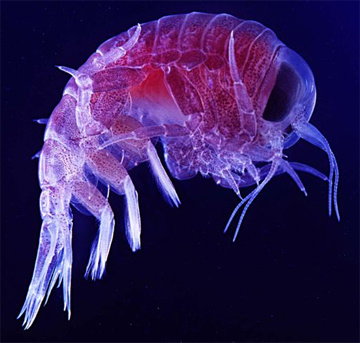This photo was taken by Uwe Kils. It shows an amphipod, a type of plankton. The photo was taken using magnification so users can see the amphipod in detail. In reality, most amphipods are only 1 mm to 140 mm in length.
Click on image for full size
Courtesy of Wikipedia Commons
Plankton
Plankton are a diverse set of
marine organisms that live in both
salt and fresh water. Some forms are able to move independently, but in general plankton drift with the currents in the body of water they inhabit. This is the primary way of defining plankton — they are drifters, and cannot actively swim against the
current. Plankton are usually divided into three functional groups, which are separated based on function rather than genetic similarity. These groups are:
Phytoplankton—these are photosynthetic autotrophs (i.e., they can feed themselves using light from the Sun). They are typically single-celled organisms and can be either eukaryotic or prokaryotic (with or without a nucleus). They live in water that is shallow enough for sunlight to shine through. Phytoplankton are responsible for producing a large fraction of the world’s oxygen, and they serve as food for a wide variety of other organisms. Phytoplankton are generally considered the foundation of most of the world’s marine food chains.
Zooplankton—this is a broad group of heterotrophic organisms (i.e., they depend on other organisms for food) that live throughout the water. The zooplankton range in size from single-celled creatures to larger animals like jellyfish, mollusks, and crustaceans, and they feed on other forms of plankton as well as on organic wastes in the water.
Bacterioplankton—this group is composed of the bacteria that drift throughout open water. They can be autotrophic or heterotrophic. They play a large role in a number of critical geochemical cycles, where elements like nitrogen, carbon, and a variety of minerals are processed by the bacteria to keep organic and inorganic (or biologically accessible and biologically inaccessible) forms of each in the proper balance in the ocean. In this way, bacterioplankton are often thought to serve as the ocean’s recyclers.
Last modified June 1, 2010 by Lisa Gardiner.
You might also be interested in:
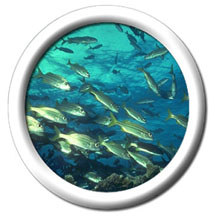
The oceans are full of life. A variety of animals and plants must survive in a complex ecosystem. Invertebrates like crabs, starfish and worms roam the sea floors. Coral grow in large numbers, creating
...more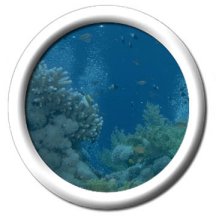
The Cnidaria phylum consists of animals with stinging cells called cnidoblasts. This includes corals, jellyfish, anemones and hydroids. Cnidarians do not have a head, and commonly look like a flower. The
...more
The phylum Mollusca contains a variety of animals, including snails, octopi and squid, along with lesser known creatures like Cowry and Limpets. Over 90,000 species of molluscs fall into the Gastropoda
...more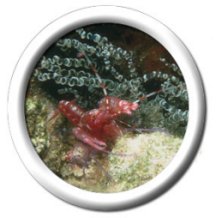
Crabs aren't the only crustaceans in the sea! The Cirripedia class is also very common. You probably know this class by its more common name, Barnacle. Barnacles are small, rounded animals generally found
...more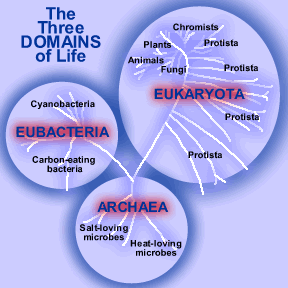
Scientists have found and described approximately 1.75 million species on Earth according to the Global Biodiversity Assessment made by the United Nations. Plus, new species are being discovered every
...more
As a part of biogeochemical cycles, certain elements move through both living and non-living components of the Earth system. The living parts of the Earth system comprise the biosphere, while the non-living
...more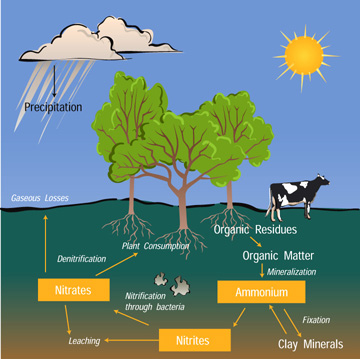
Nitrogen is an element that is found in both the living portion of our planet and the inorganic parts of the Earth system. The nitrogen cycle is one of the biogeochemical cycles and is very important for
...more
The element carbon is a part of seawater, the atmosphere, rocks such as limestone and coal, soils, as well as all living things. On our dynamic planet, carbon is able to move from one of these realms to
...more


